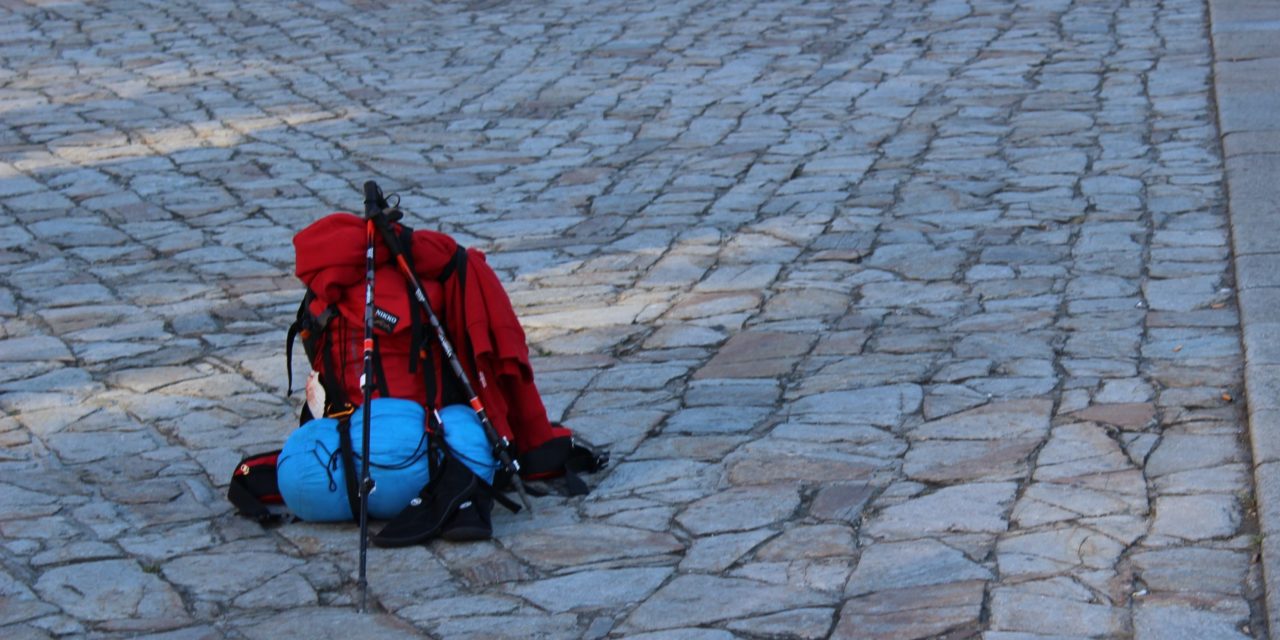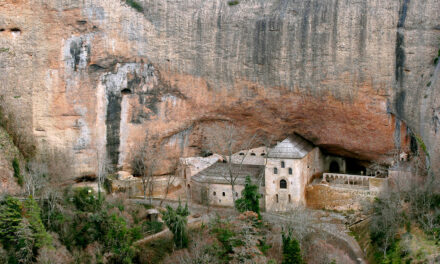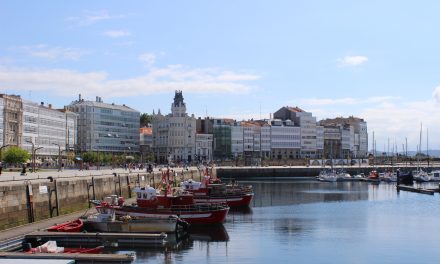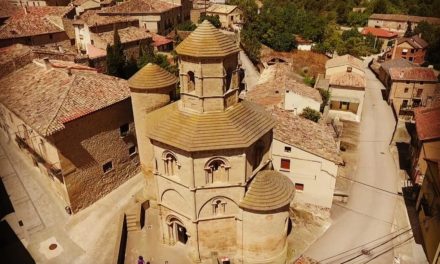If there is one piece of advice we can give without fear of error, it is to carry as little weight as possible in the backpack. The luggage of the pilgrim must contain what is strictly necessary and the rule of eliminating all that is not indispensable should always be borne in mind.
When preparing the backpack we should never forget that it will go with us everywhere and over great distances, between 15 and 35 kilometers per day depending on the physical shape of the pilgrim and the objectives that have been set. set. Being too heavily laden can be the pilgrim’s biggest enemy, causing problems on the Way, not only on one’s back but also on the ankles and knees.
The advice that is usually given for the weight of the loaded backpack is that it should not exceed 10% of our body weight and, of course, the lower the weight the better. The result of this calculation indicates that, in general, the ideal would be an estimated weight of between 5/6 kilos for women and 7/8 kilos for men, something that the future pilgrim must understand in a practical way, going out to train weeks before the start of your Camino with the full weight you want to carry.
To begin with, it is important to remember that when choosing the backpack the bigger it is the more things we will be tempted to take with us, so a small or not very big backpack is already a good start. Thus, taking into account the distance to be travelled, the time of year and the body can vary between 35 and 60 litres. It is important that the backpack be light and anatomical, preferably with padding, side pockets and hip support.
The next thing is starting to pack it … and while doing so we must ensure that the weight is well distributed so that the backpack stays balanced.
Now the next question is to know what to bring? The best thing is always to think about the essentials, those things we have no doubts about. For it is often true that when we have doubts about taking something or not, it usually means that it is something we could do without. When we start dealing with “maybe’s” we should pass them over. And in any case, if something should prove necessary, it can always be acquired on the Camino.
The first thing is to choose a sleeping bag, one which is as light as possible. Thanks to the modern materials, sleeping bags nowadays can be extremely light. After the sleeping bag, there is the insulating mat, which usually has multiple uses for the pilgrims on the Camino- from taking a nap, to resting one’s feet or even serving as a pillow.
Wearing headgear is not an option, but a necessity whether it be a hat or a cap. It should preferably have a visor or wings to protect you from the sun or rain, depending on the time of year.
It is also important to wear sunglasses and a neck scarf or a cloth or towel wristband that can be used to cool off with water and to wipe away dust and sweat from the face.
T-shirts and a sweater or a woollen jersey or fleece- will be worn for warmth, depending on the time of year and should always be chosen while keeping in mind their weight, the space they will take up and the ease with which these materials can dry out when we wash them (100% cotton takes longer to dry than many newer synthetic fabrics).
It is essential to carry two pairs of pants, one for walking, which will be long or short depending on the time of year, and a spare pair and to wear at the end of the stage, and at the beginning and end of the Camino.
Do not forget a rain poncho that will cover the backpack, no matter the time of year. In Galicia we know from experience that it may be necessary all year round! If it is a pilgrimage in winter, it should be a shelter and windbreaker, while in warmer times it could simply be a plastic raincoat that occupies as little space as possible and weighs almost nothing in the backpack.
Socks are a complex issue. Some people maintain that 100% cotton absorbs perspiration and prevents blisters, but they require more drying time. Another possibility is to opt for the new materials offered by specialized stores. As for the number of pairs, the minimum is 2, but 3 and even 4 is a good option, because many times we will have to change them more than once a day if we our feet are damp. We must never forget that it is essential to keep the feet dry to avoid blisters.
Regarding underwear, it could be enough with 3 or 4 pants could be sufficient, with the same recommendations on their material as for t-shirts and socks. In this case there is also the option of “paper panties”, which take up no space, barely weigh anything and are disposable.
Regarding footwear, there is a huge variety of boots, sandals or trekking shoes today. Some still opt for boots that come up to the ankle, saying they avoid sprains, but increasingly there are more people who prefer modern sandals allow the foot to ‘breathe.’ The most important thing is that be a shoe that has been used in training, or other pilgrimages so that there will be no nasty surprises on the Camino. It is essential that before taking them on the road, we already have the assurance that, after traveling long distances, they will not rub or burn the feet.
Along with the footwear for the Camino, flip flops will be necessary for the shower and to use at the end of the stage. A tip for choosing them is to consider if, according to the period of the year, it will be necessary to use socks, since those with separate toes will not be appropriate.
It is essential to also bring a toilet bag but it must be as basic as possible. In addition to personal hygiene products, if possible, you should have a small kit in case of possible injuries, chafing and blisters. So in addition to alcohol or Betadine you should also take should gauze, tape, strips and needle and thread for the cure of blisters. Another element to consider is the sun: you must not omit to include creams to protect you from it.
With regard to medicines, those who require some type of medication must take it for the entire journey and allergy sufferers should not forget their antihistamines.
We also recommend carrying writing materials with which make practical notes or personal impressions, a notebook and pen, or its more technological version, such as a tablet. Technology on the Camino is a personal decision.
And of course, do not forget about documentation! i.e. an Identity card or passport and Social Security card or medical insurance.
It is also practical to have a multipurpose knife, a flashlight, a lighter and an aluminum or tin cup.
Regarding food, in the backpack you can always have some nuts or chocolate for emergencies.
Finally, the famous staff or stickers. This can be an important support that will help to ease your downhill slopes and will also be useful for clearing of the path of weeds … The important thing is its height, it is recommended that it is at least the height of the user.
In the case of pilgrims who make their way on a bicycle, several elements must be added for maintenance and repairs that may occur on the Camino, something that is not so problematic since the bike’s bilateral saddlebags can be loaded more than the backpack.
Among the elements that specific guides usually point out are innertubes, it is advisable to take two or three of these and to know how to change them; along with patches for punctures and even a piece of tyre cover and an emergency solution to apply it with until the tyre can be changed. You should also an air pump; cleaning and greasing tools and brake shoes. And do not forget a padlock for the bicycle.
Also, many of the garments are specific: gloves are essential, the helmet replaces the cap and the jerseys, shorts and shoes must be specialized. Regarding the footwear we make the same recommendation as for the walkers: you must have thoroughly ‘broken them in’ before setting off with them on the Camino.











